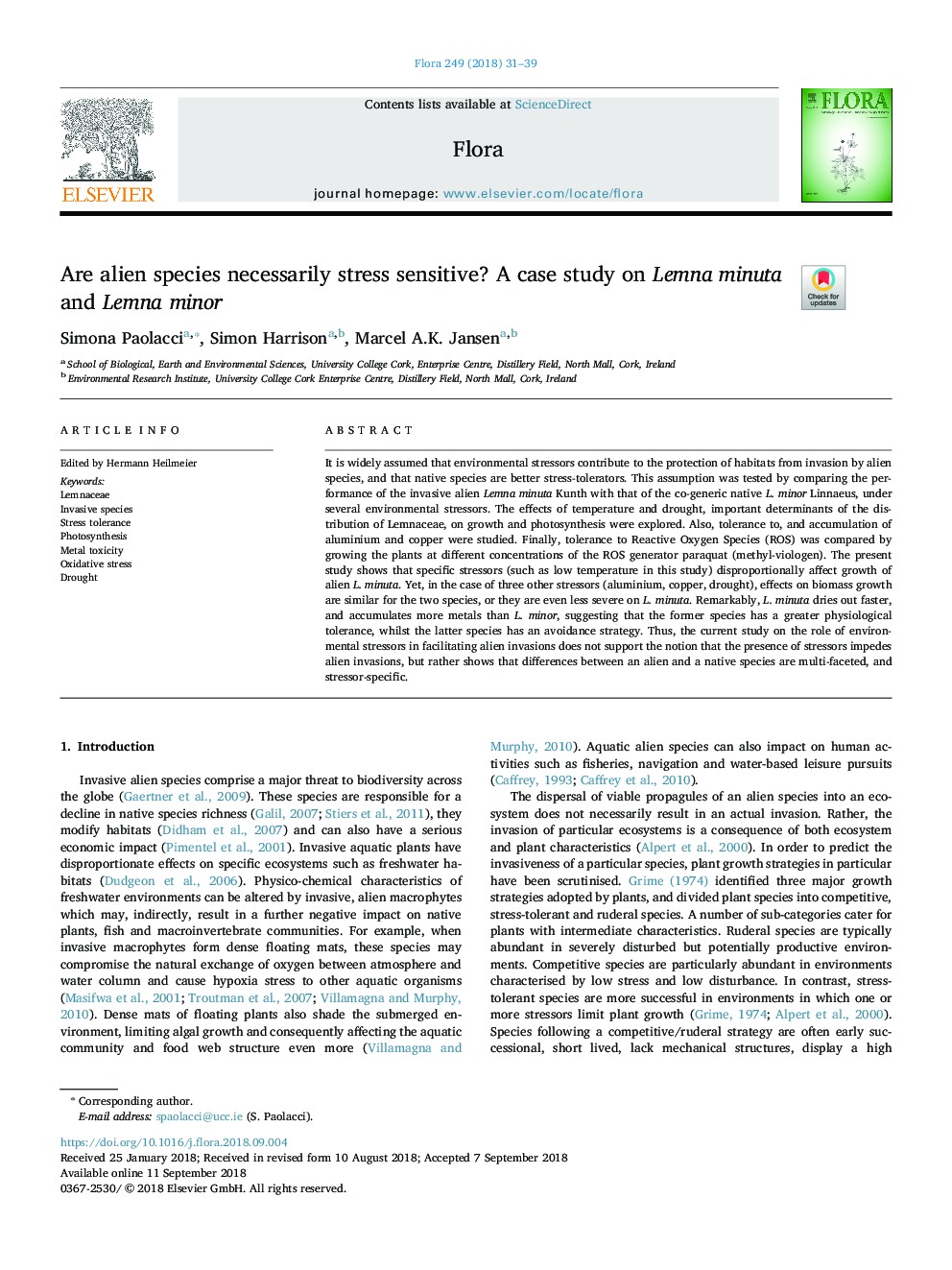| Article ID | Journal | Published Year | Pages | File Type |
|---|---|---|---|---|
| 10157855 | Flora - Morphology, Distribution, Functional Ecology of Plants | 2018 | 9 Pages |
Abstract
It is widely assumed that environmental stressors contribute to the protection of habitats from invasion by alien species, and that native species are better stress-tolerators. This assumption was tested by comparing the performance of the invasive alien Lemna minuta Kunth with that of the co-generic native L. minor Linnaeus, under several environmental stressors. The effects of temperature and drought, important determinants of the distribution of Lemnaceae, on growth and photosynthesis were explored. Also, tolerance to, and accumulation of aluminium and copper were studied. Finally, tolerance to Reactive Oxygen Species (ROS) was compared by growing the plants at different concentrations of the ROS generator paraquat (methyl-viologen). The present study shows that specific stressors (such as low temperature in this study) disproportionally affect growth of alien L. minuta. Yet, in the case of three other stressors (aluminium, copper, drought), effects on biomass growth are similar for the two species, or they are even less severe on L. minuta. Remarkably, L. minuta dries out faster, and accumulates more metals than L. minor, suggesting that the former species has a greater physiological tolerance, whilst the latter species has an avoidance strategy. Thus, the current study on the role of environmental stressors in facilitating alien invasions does not support the notion that the presence of stressors impedes alien invasions, but rather shows that differences between an alien and a native species are multi-faceted, and stressor-specific.
Keywords
Related Topics
Life Sciences
Agricultural and Biological Sciences
Ecology, Evolution, Behavior and Systematics
Authors
Simona Paolacci, Simon Harrison, Marcel A.K. Jansen,
